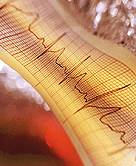Article
Heart Muscle Damage Not Reduced by Utilizing Balloon Pump before Angioplasty
Author(s):
Researchers have found that inserting intra-aortic balloon pumps before angioplasty in patients with AMI does not reduce heart muscle damage.

Duke University Medical Center researchers have found that inserting intra-aortic balloon pumps before angioplasty in patients suffering from acute myocardial infarction (AMI) does not reduce the extent of heart muscle damage.
Manesh Patel, MD, principal investigator and cardiologist, Duke Clinical Research Institute, reported that "animal studies had suggested that inserting a balloon pump before opening the vessel would reduce the heart's workload and by doing so, could potentially reduce infarct size. When we tested this observation in humans, we did not show an infarct reduction."
This multi-center, prospective, randomized clinical trial evaluated 337 patients diagnosed with acute ST-segment elevation myocardial infarction (STEMI) without shock within six hours of chest pain onset and planned primary cercutaneous coronary intervention (PCI). Of the total participants, 161 received intra-aortic balloon counterpulsation (IABC) before primary PCI and 176 received primary PCI minus IABC support.
The researchers used cardiac magnetic resonance imaging to measure the infarct size of the patients, the mean of which was not notably dissimilar between the IABC and SOC groups (42.1% versus 37.5%).
Thirty days after the first treatment, the researchers found that major bleeding or transfusion was occurring in five (3.1%) of the IABC patients versus three (1.7%) of SOC patients, and that major vascular complications occurred in seven (4.3%) of the IABC patients, while only two (1.1%) of the SOC patients experience such complications.
By six months, three (1.9%) in the IABC group had died, in comparison to nine (5.2%) patients who had died in the SOC group.
"The most striking observation is the excellent overall outcome for the highest-risk patients within the context of this trial," said E. Magnus Ohman, MD, study researcher and cardiologist at DCRI. "The IABC group had less than five percent mortality. It's hard to improve that. We've gotten very good at treating AMI patients." Ohman also noted that 15 of the patients in the standard of care group switched to the IABC group, five before receiving PCI and 10 after.
"While routine use of IABC is not recommended,” stated Patel, “physicians should be vigilant about identifying patients who are at risk for rapid deterioration and may benefit from counterpulsation.”
This study was not designed to report clinical events, but even so, the researchers reported that the findings are interesting due to the unique insight they provide into treating AMI patients.
The findings were published online in the Journal of the American Medical Association, and presented at the European Society of Cardiology in Paris, France.





